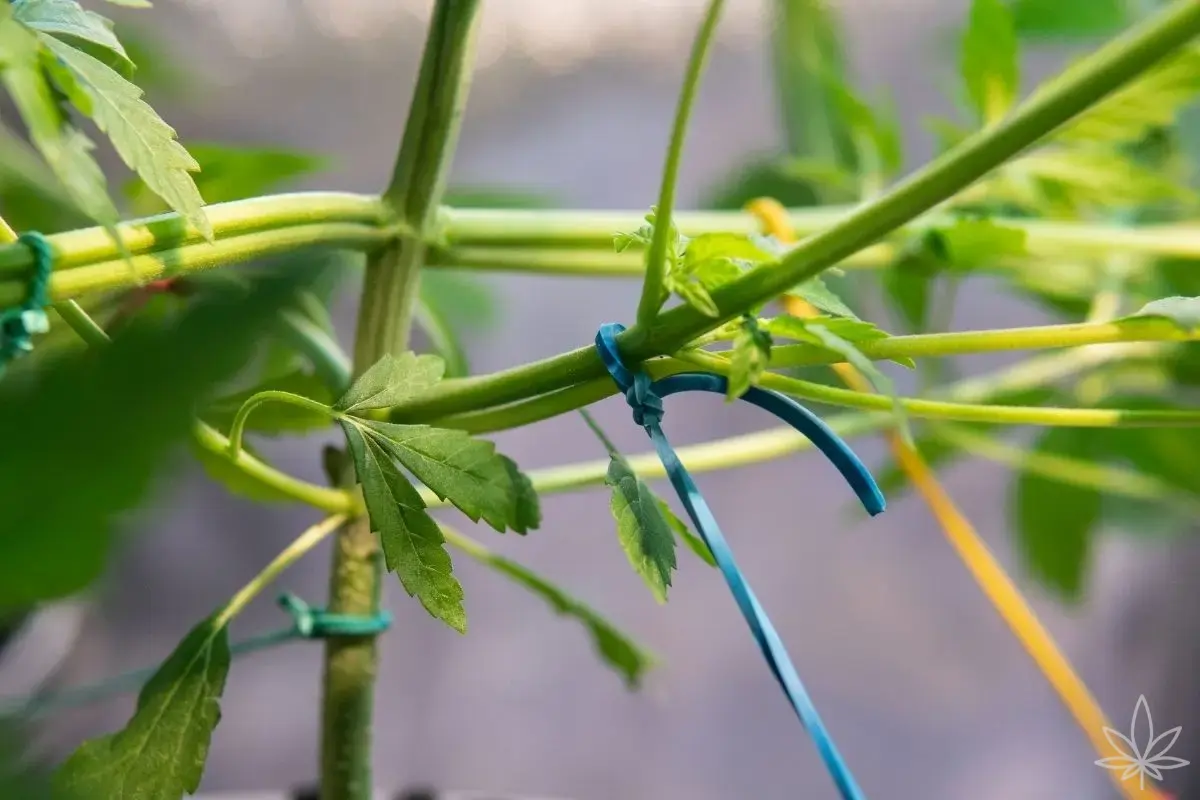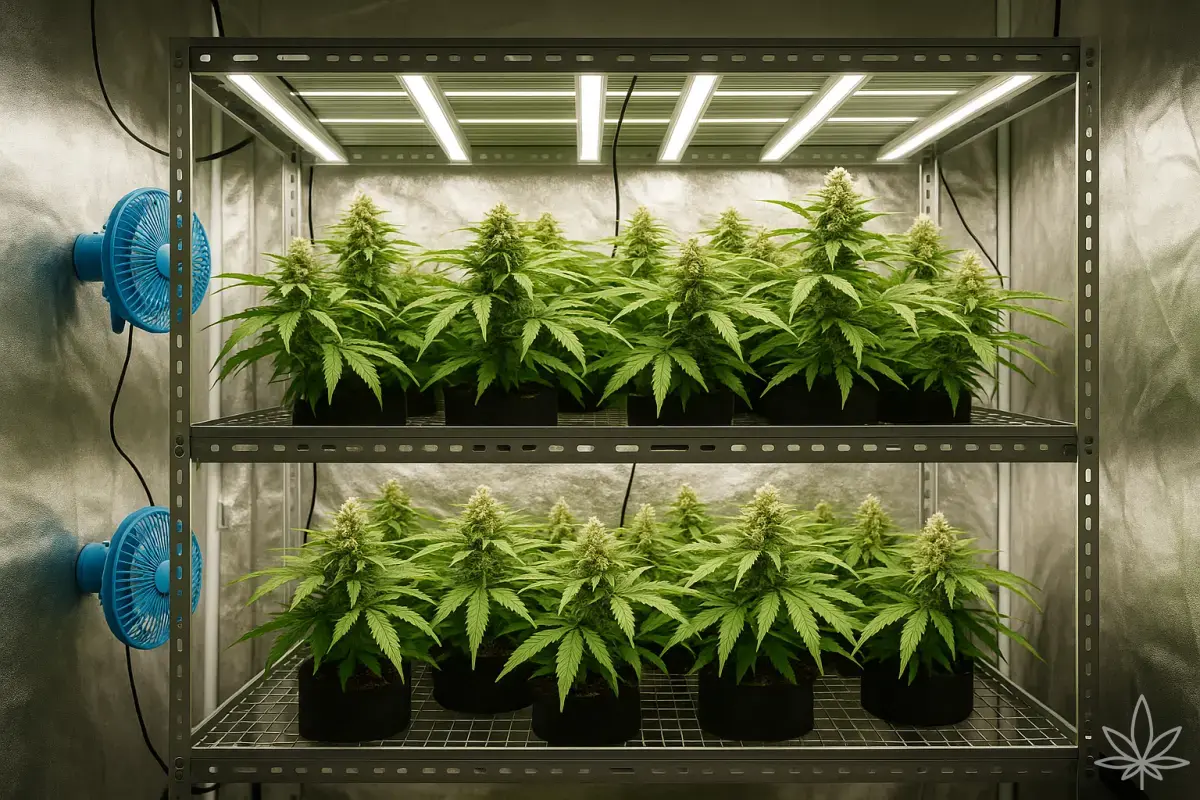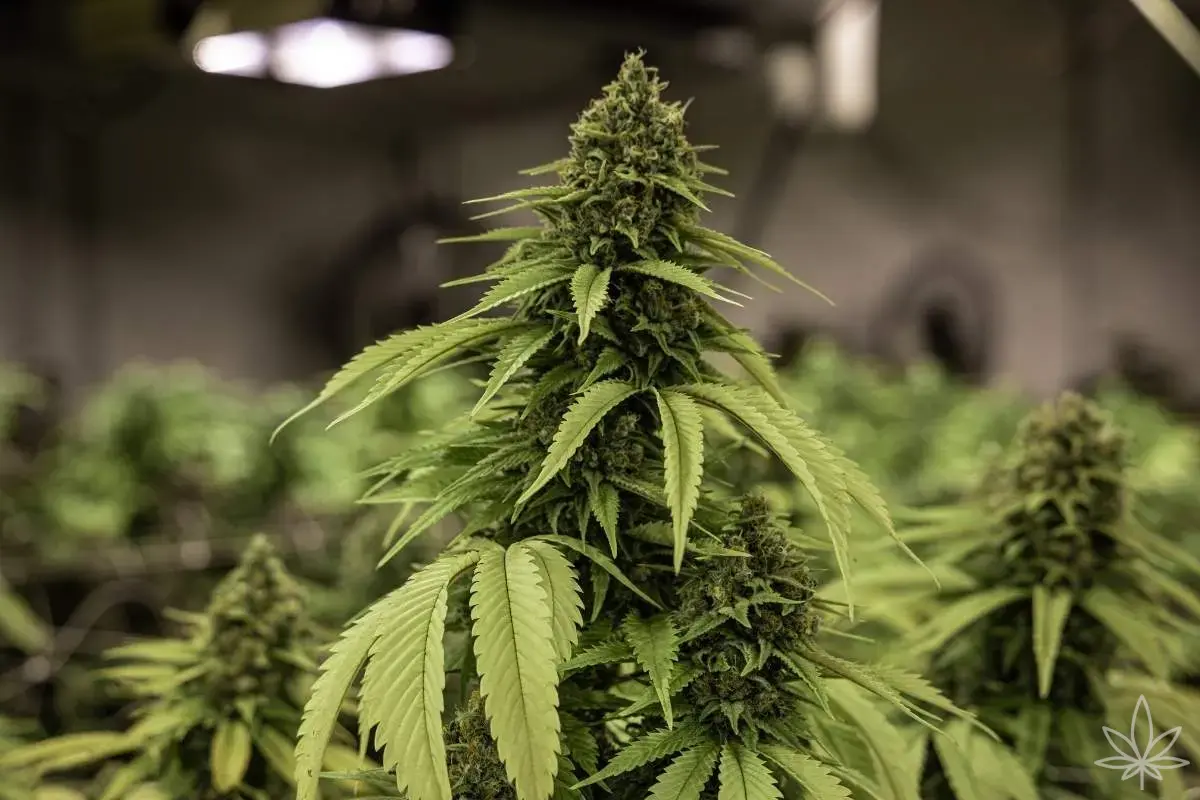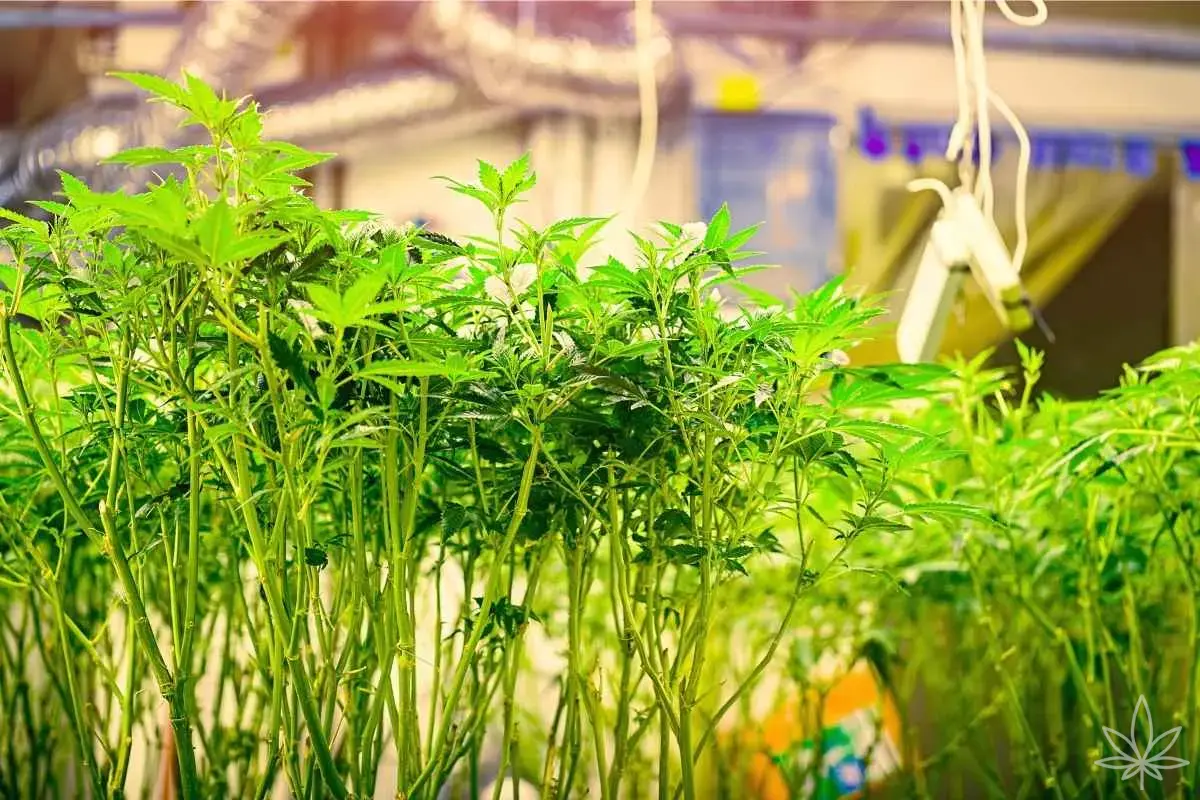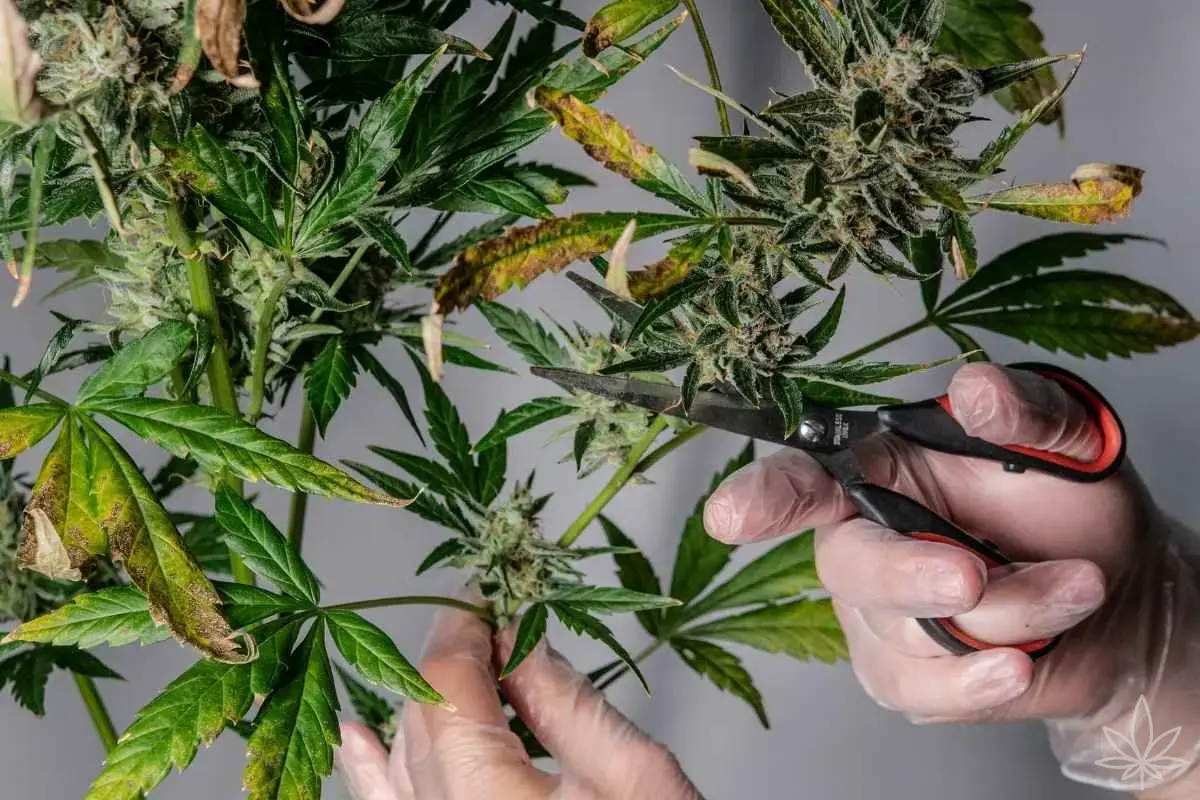If your canopy is kissing the light and tweaking the dimmer isn’t enough — it’s time for supercropping. This isn’t a brutal hack, it’s smart height control for cannabis: you soften the stem, lay the branch at an angle, and the plant responds with thicker sap flow and a flatter table of colas. In indoor grows, PPFD, DLI, and LED distance rule the game — supercropping helps you align all three without adding watts.
Supercropping — what it is and why it works
In short: controlled micro-damage to conductive tissues, after which the plant heals the wound, forming a “knuckle” — a reinforcing swelling at the bend point. That “bubble” improves water and assimilate transport, and the branch itself sets horizontally, evening out the canopy. A welcome side effect: auxins stop feeding only the “alpha cola,” so more side colas get their fair share of light. That’s the essence of training cannabis plants — “smarter, not harder.”
Don’t confuse it with topping: with supercropping you don’t cut the tip — you soften it and set a new direction. In indoor setups, where every centimetre of LED distance matters, it’s one of the best value moves alongside LST and SCROG.
When to reach for pinch-and-roll, and when to skip it
- Vegetative stage (weeks 3–6): Stems are pliable and the plant bounces back fast — the golden window for pinch-and-roll.
- Early flower (weeks 1–3 of 12/12): As a strain hits stretch, supercropping helps keep the “ceiling” in check. Later on, better skip it — risk to yield goes up.
- Autoflowers: Only early and very sparingly. Autos don’t forgive long recovery — if you’re unsure, pick LST instead.
Green lights for action: tops are racing ahead and LED distance is dropping; raising the panel or lowering power isn’t enough; you want to spread PPFD more evenly across the tent.
How to “soften” stems — step-by-step technique
- Bend point: 2–5 cm below the tip or exactly where you want to “lay” the branch. Avoid fresh junctions and areas with woody, hardened bark.
- Grip: Thumb and index finger around the stem.
- Pinch-and-roll: Gently squeeze and roll the stem for 5–10 s until you feel fibres “give” and the stem becomes pliable.
- The bend: In a smooth motion, lay the branch at 70–90° from vertical. You want a curve, not a sharp crease.
- Support + LST: Fix the position with a soft tie/garden zip, attaching to the pot rim, a stake, or a SCROG square.
- Tune-up after 24–48 h: Branches will “aim” upward again — that’s normal. Tighten ties to keep a level canopy.
Pro tip: If the stem feels like a twig and crunches instead of flexing — move to a greener section or skip. Supercropping is a dance, not a wrestling match.
Why do it? Height control by the numbers
- LED distance and PPFD: Keeping tops 20–40 cm from a typical 200–480 W LED over a 120×120 cm area maintains safe PPFD without bleaching.
- DLI and uniformity: A spread, even table of colas = stable DLI across the footprint. Less popcorn, more “A-grade” flowers.
- Stretch under control: In weeks 1–3 of 12/12 many photoperiods double in height. One or two bends erase “skyscrapers” and save LED distance.
Supercropping risks and how to minimise them
The biggest enemy is haste.
- Bark tearing: Too sharp a bend without proper softening. Work slowly, roll longer.
- Over-stacked stress: Don’t combine heavy supercropping with massive defoliation or transplanting on the same day. Spread interventions across 2–4 days.
- Hermaphroditism: Sensitive genetics can react badly to harsh stress early in flower. Go gently, watch the nodes.
- Infections: Always disinfect hands and tools (70% IPA). Wounds are open doors for pathogens.
- Growth stall: Late interventions (after week 3 of 12/12) more often harm than help.
First aid when it does “crack”
It happens. If a stem splits: bring the edges together, wrap with vinyl plant tape or electrical tape, add a bamboo stick as a splint. You can dab the edge with aloe or honey — natural antiseptics — but stabilisation matters most. Under standard conditions you’ll see healing after 48–72 h; remove tape after 7–14 days. Meanwhile, keep gentle VPD conditions and avoid drafts.
Aftercare — what to do post-training
- Light: Reduce DLI by ~10–20% for a day to avoid “toasting” freshly stressed tissues.
- Feeding:Silicon (Si) strengthens cell walls — in veg aim for ~50–100 ppm Si, in flower stay near the lower end. Keep Ca/Mg steady.
- Irrigation and climate: Keep a consistent rhythm, avoid overwatering. Early flower or veg like 55–65% RH, then 45–55% later on.
- Hygiene: Remove broken leaves right away — a wet thicket invites trouble.
Integrating LST and SCROG — a duet for height control
Supercropping pairs beautifully with gentle LST. First you soften and lay branches (pinch-and-roll), then with light LST you refine canopy geometry. If you’re running SCROG, treat the net like a “tripod” for freshly laid branches. You’ll maintain a stable LED distance and spread PPFD almost like a lab bench.
How much does it cost? (EUR)
- Soft garden ties (10–20 m): 4–8 €
- Vinyl plant tape / electrical tape: 5–10 €
- Bamboo stakes (10–20 pcs): 3–7 €
- SCROG net 120×120 cm: 8–15 €
- Silicon supplement (0.5–1 l): 10–20 €
With 30–50 € you’ll fully kit out a home “canopy surgeon” for many cycles.
FAQ — quick answers for the impatient
How many bends per session? Usually 1–3 key branches per plant, then 2–3 days break and a potential touch-up.
Final distance from the LED? Depends on the panel, most often 20–40 cm over 120×120 cm with 200–480 W; follow the maker’s guidance and your leaves (tacoing, bleaching = too close).
Does supercropping increase yield? Usually yes, because it evens out DLI and improves sap flow. The keys are timing and moderation.
Autos? Possible, but early and with feel. If unsure, choose LST without heavy squeezing.
Summary
Supercropping is an elegant way to control cannabis height indoors: a little stress in the right spot, in return for a flat canopy, safe LED distance, and more uniform yields. The rule is simple: soften — bend — support — care. Combine it with LST/SCROG, keep things clean, and feed silicon. Once you see solid knuckles and ruler-straight tops, you’ll get why the pinch-and-roll technique is a staple in the seasoned grower’s repertoire.

